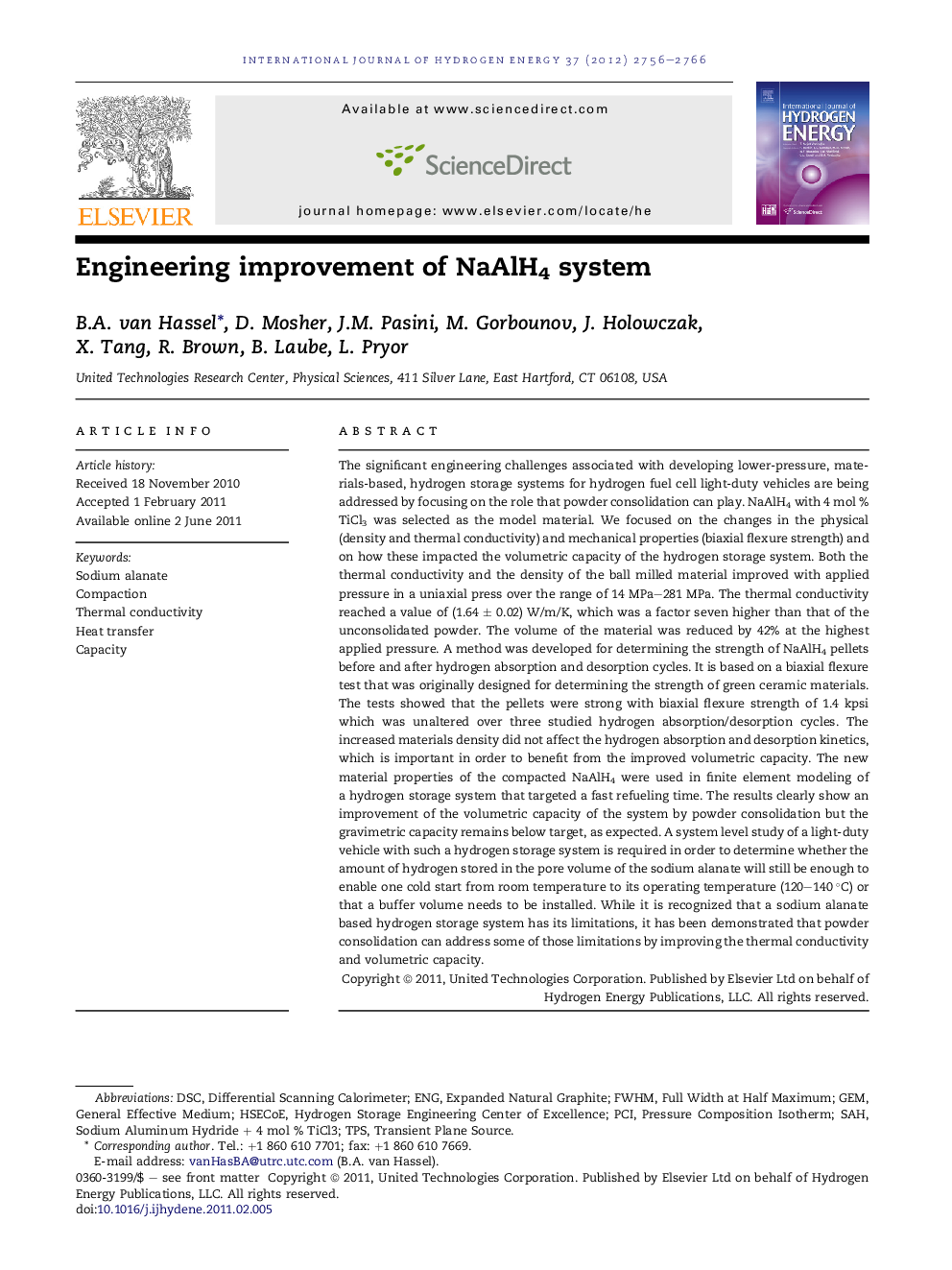| کد مقاله | کد نشریه | سال انتشار | مقاله انگلیسی | نسخه تمام متن |
|---|---|---|---|---|
| 1271703 | 1497566 | 2012 | 11 صفحه PDF | دانلود رایگان |

The significant engineering challenges associated with developing lower-pressure, materials-based, hydrogen storage systems for hydrogen fuel cell light-duty vehicles are being addressed by focusing on the role that powder consolidation can play. NaAlH4 with 4 mol % TiCl3 was selected as the model material. We focused on the changes in the physical (density and thermal conductivity) and mechanical properties (biaxial flexure strength) and on how these impacted the volumetric capacity of the hydrogen storage system. Both the thermal conductivity and the density of the ball milled material improved with applied pressure in a uniaxial press over the range of 14 MPa–281 MPa. The thermal conductivity reached a value of (1.64 ± 0.02) W/m/K, which was a factor seven higher than that of the unconsolidated powder. The volume of the material was reduced by 42% at the highest applied pressure. A method was developed for determining the strength of NaAlH4 pellets before and after hydrogen absorption and desorption cycles. It is based on a biaxial flexure test that was originally designed for determining the strength of green ceramic materials. The tests showed that the pellets were strong with biaxial flexure strength of 1.4 kpsi which was unaltered over three studied hydrogen absorption/desorption cycles. The increased materials density did not affect the hydrogen absorption and desorption kinetics, which is important in order to benefit from the improved volumetric capacity. The new material properties of the compacted NaAlH4 were used in finite element modeling of a hydrogen storage system that targeted a fast refueling time. The results clearly show an improvement of the volumetric capacity of the system by powder consolidation but the gravimetric capacity remains below target, as expected. A system level study of a light-duty vehicle with such a hydrogen storage system is required in order to determine whether the amount of hydrogen stored in the pore volume of the sodium alanate will still be enough to enable one cold start from room temperature to its operating temperature (120–140 °C) or that a buffer volume needs to be installed. While it is recognized that a sodium alanate based hydrogen storage system has its limitations, it has been demonstrated that powder consolidation can address some of those limitations by improving the thermal conductivity and volumetric capacity.
► Sodium Aluminum Hydride (SAH) compacts well by uniaxial pressing.
► Cycling stability of SAH pellets needs to be improved.
► Significant improvement of volumetric capacity and thermal conductivity through compaction.
► Compaction does not cause a change in the H2 absorption and desorption rate.
Journal: International Journal of Hydrogen Energy - Volume 37, Issue 3, February 2012, Pages 2756–2766